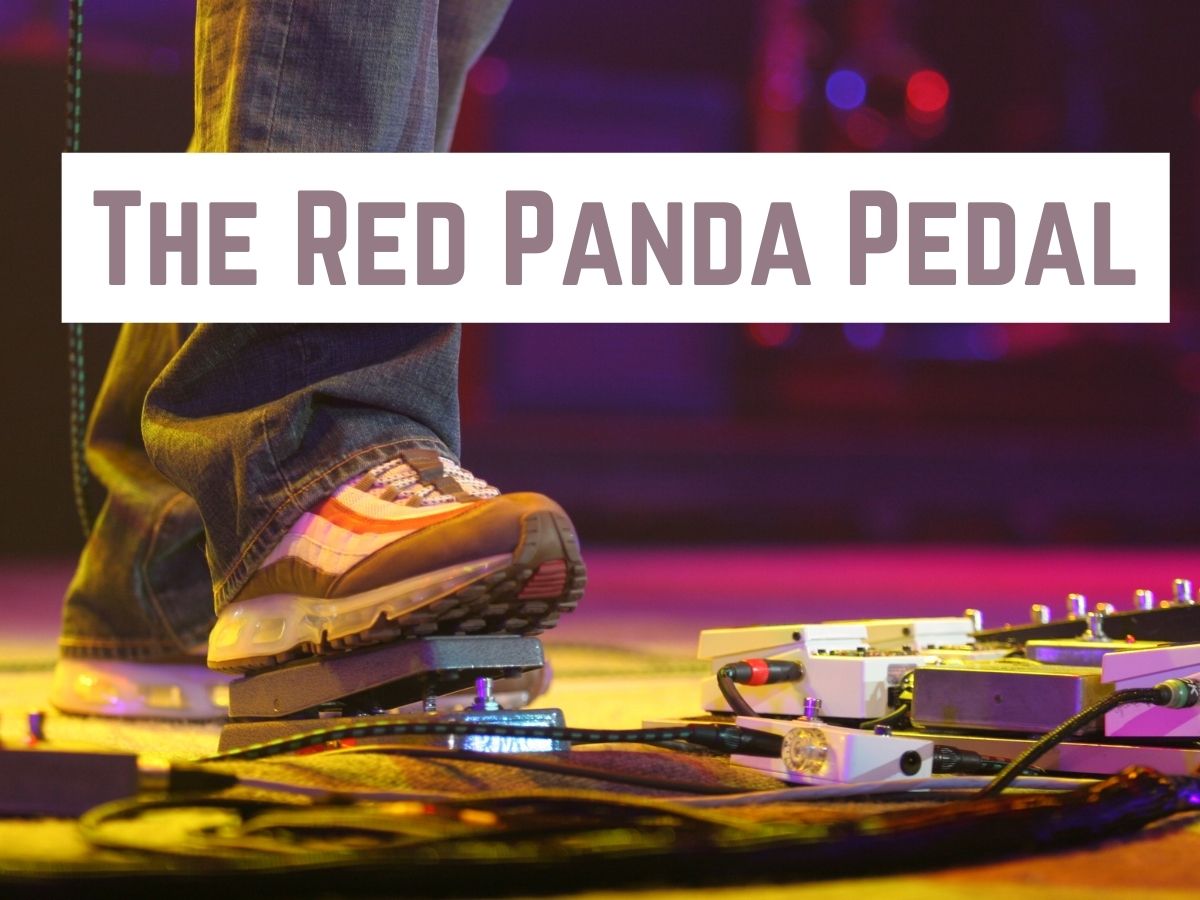
When I began searching for a pedal, I quickly realized that there were so many on the market, it would take me forever to find one that worked for me. That’s why I’m here to shorten your search time and introduce you to a great product: the Red Panda pedal.
Options When Purchasing a Red Panda Pedal

You can’t really go wrong when you invest in a Red Panda pedal. This company has received many positive reviews, and their products will deliver exactly what the description tells you. Let’s take a look at Red Panda’s different pedals and figure out which model is the best for you.
#1: Red Panda Particle
This product is a will give you a really cool and unique delay effect. The Red Panda Particle pedal takes your audio, chops it into small pieces, and will then delay the pitch. This will give you a glitchy sound, almost like the music is tripping over itself.
Overall, the effect would be great for you if you’re looking to get more involved in ambient style music. You’ll be able to produce a very surreal sound with this Red Panda effect pedal.
The Particle has three pitch modes: detune, density, and LFO (pitch speed). You can adjust the pitches up to one octave above or below the pitch you’re playing using the pitch knob. Depending on the mode, you’ll also be able to delay the audio from a range of 0 to 900 ms.
Although 900 ms may seem like a really short period of time, you’ll hear a really significant delay effect on this setting. This pedal also has a freeze mode, which means the delay buffer is recycled instead of the system taking in a new audio input. Here’s a link to what freeze mode sounds like on the Particle
This Red Panda pedal has so many unique features to it, you’ll need to spend some time experimenting with different sounds in order to get a full understanding of what it’s capable of.
You can read my honest review about this pedal here.
#2: Red Panda Context
The Red Panda Context pedal emits a much more natural reverb effect and a cleaner delay than the Red Panda Particle. This product is more similar to classic reverb pedals, meaning you’ll find six more traditional settings on it, including Room, Hall, Cathedral, Gated, Plate, and Decay.
Like you may have guessed, the “Room” setting will produce a much less reverberant sound than the “Cathedral” setting because all of these settings reflect how the venues would sound in real life. If you want to read more about different types of reverb, take a look at this article.
This is a mono pedal, meaning you can’t play the effects through more than one amplifier. This may be a negative for you, but based on my personal experience, most guitarists don’t tend to use many amplifiers anyway.
Overall, I’d recommend this pedal for musicians who are looking to create a more classic reverb sound. You can hear a sample of what this pedal can do here.
I’d really recommend investing in this pedal if you’re new to effects pedals and you want to learn the basics.
You can read my review about Red Panda Context pedal here.
#3: Red Panda Bitmap
This Red Panda Bitmap pedal does what the name implies: bit reduction. This means that the device will reduce your audio signal’s bit depth and will subsequently create a distorted, grainy sound.
If I could use one word to describe the sound I hear when a musician uses the Bitmap, it would be “fuzzy”. This is why I’d recommend this pedal to players who want to experiment with the heavy metal, rock, or punk genres.
You might also hear bit reduction referred to as bitcrushing, which will give you an idea as to what this device does to your signal: it crushes and subsequently distorts the sound. To hear the Bitmap in action.
The Red Panda Bitmap comes with a blend control setting. This will allow you to add more subtle crushing to your playing so that the effect won’t be as overbearing.
The Bitmap will give you a warmer sound than the other Red Panda models I’ve mentioned, and the overall quality sounds much closer to the natural instrument’s tone than the sound other pedal effects produce.
While most owners of the Bitmap have given many positive reviews, it’s important to note that when you’re playing in high frequency setting in crush mode, you may find you have less clarity in your bass tones than is ideal.
However, this is a common issue with many bit reduction pedals, so I wouldn’t say this is something you can easily avoid by buying from another company.
I have prepared a review about this pedal in this article.
#4: Red Panda Raster
In my opinion, the Red Panda Raster pedal has the most robotic sound out of all the devices on this list. This pedal has two master modes: the delay mode and the shift mode. The delay mode spans from 20 to 750 milliseconds of delay, which is quite a significant range.
The Raster pedal’s second master mode, the Shift mode, will allow you to experiment with combining pitch-shifts and delays. This pitch shift setting will sound great when you’re playing broken chords and will produce a shimmering effect.
The Red Panda Raster also comes with a reverse delay setting, which is a really unique feature that will play your audio back to you in reverse. For example, if you strum a chord on an electric guitar, the Raster pedal will play the audio back to you starting with the weakest part of the decay and then gradually build back up to the strongest part (your initial strum).
Check out this Red Panda Raster YouTube demo to hear what the pedal sounds like in action
I’d recommend this pedal for musicians who are seeking a quirky, abstract sound in their music. This pedal creates sounds that are much more obscure than some of the sounds you’ll hear from the Red Panda Context pedal.
Some musicians with this pedal have said they wish the device had a way to select specific pitch shifts. This is something to consider before you invest in the Red Panda Raster pedal if perfect pitches are important to you.
You can visit this page to see my review.
Conclusion
I hope this article gave you a better idea of which Red Panda pedal is right for you. Committing to one pedal can be tough, so consider the style of music you play and go from there. Let me know if you like this article and have fun with your pedal!
